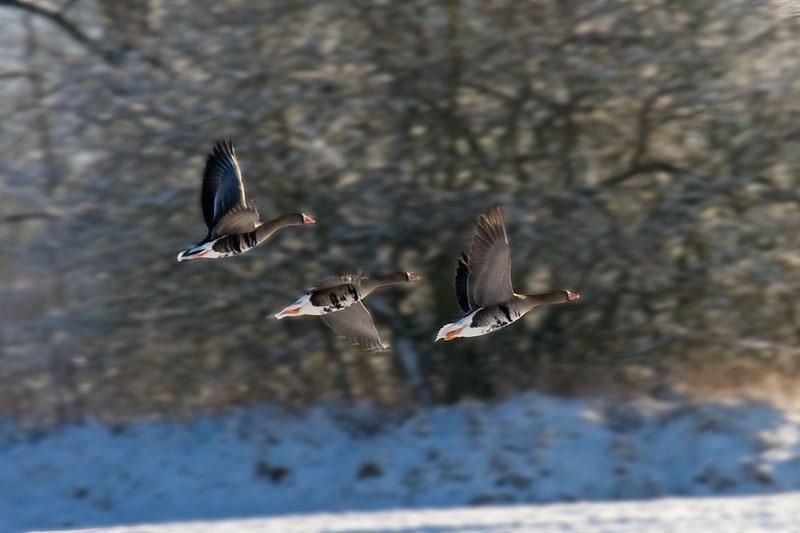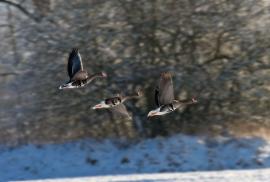Guide to Boreal Birds
Overview
This is the least common goose in the East, occurring in numbers only along the Gulf Coast in Louisiana and Texas. Its winter headquarters is California's Sacramento Valley. These geese often migrate in large flocks at night, when they can be identified by their distinctive call. Like other geese they often leave the marshes to feed in nearby stubble fields, where they are frequently concealed from view until the observer is very close, when they explode noisily into the air. The "Tule Goose" of the West Coast is considered a large race of the Greater White-fronted; its breeding grounds were unknown until 1979, when birds were found nesting near Anchorage, Alaska.
Description
27-30" (69-76 cm). A dusky-brown goose with conspicuous white belly and undertail coverts; white patch on front of face; underparts barred and flecked with black. Bill usually pink; legs orange. Birds from Greenland have orange bills. Young birds lack white face and black bars on underparts.
Voice
A distinctive bark: kla-ha! or kla-hah-luk!
Nesting
5 or 6 cream-colored eggs in a down-lined grassy depression on the tundra.
Habitat
Breeds on marshy tundra; winters on marshes and bays.
Range/Migration
Breeds in Alaska, far-northern Canada, and Greenland. Winters from coastal British Columbia to California, in New Mexico, and along Gulf Coast in Texas and Louisiana; more rarely on East Coast and in interior. Also breeds in northern Eurasia.



